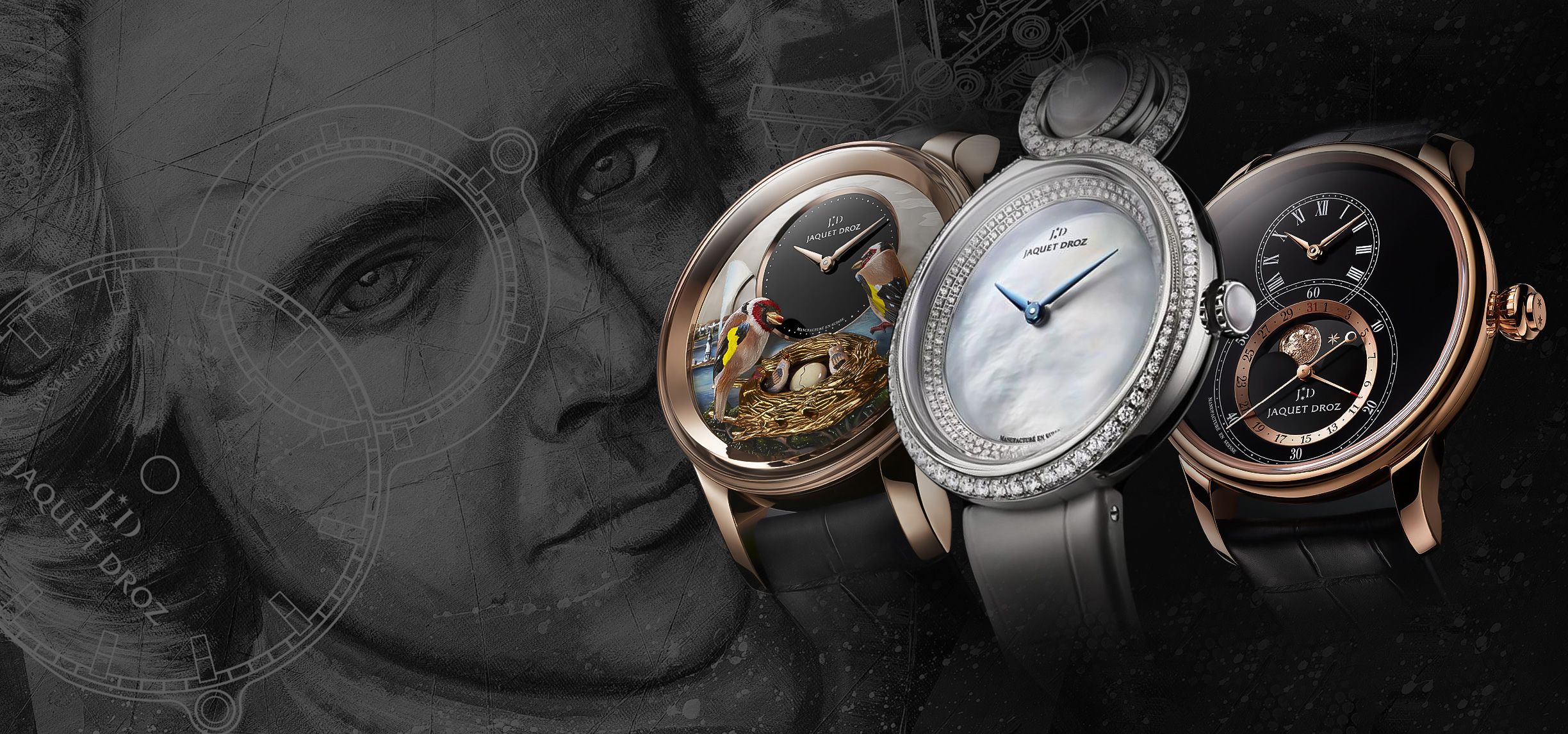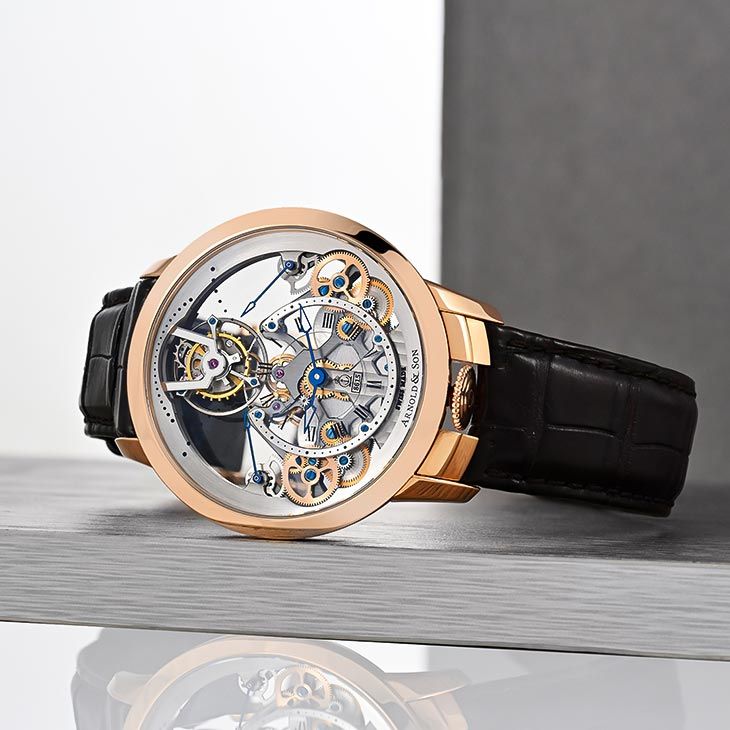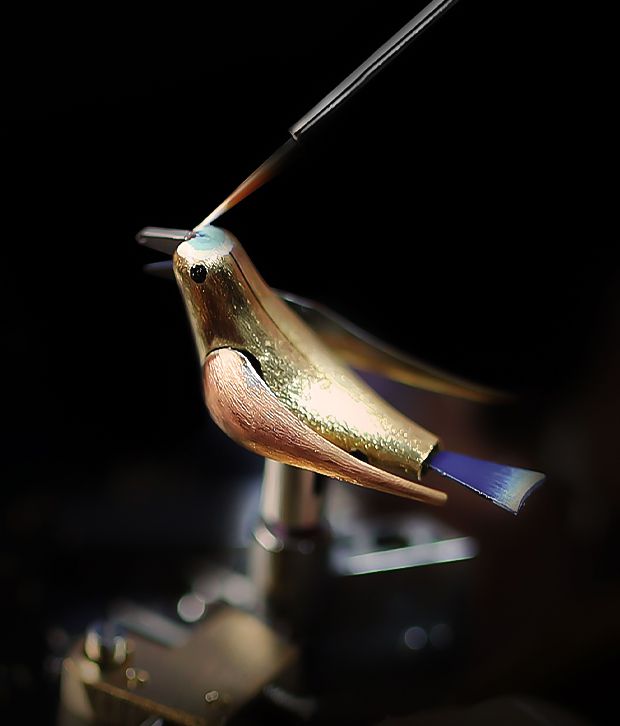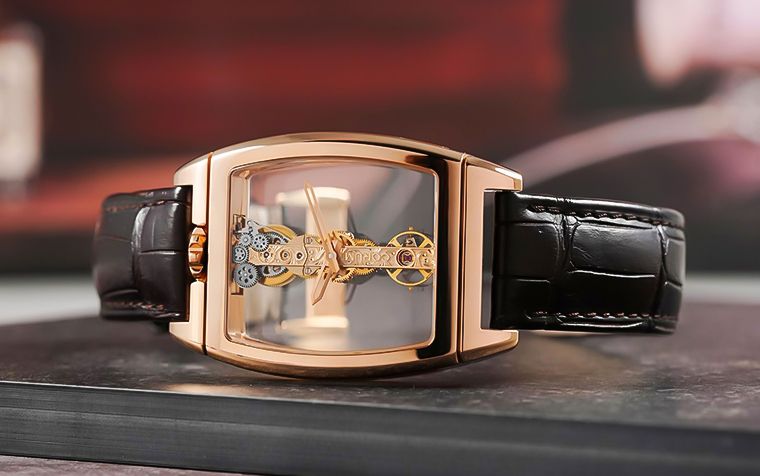 Trending Articles
Trending Articles
-
10 Best Dive Watches To Invest In
07 Apr, 20230
-
Top Luxury Pre-Owned Watches Under 2 Lakh
25 Nov, 20220
 Featured Video
Featured Video
A Collector’s Delight — Arnold & Son Time Pyramid
READ FULL STORYSwiss watchmaking has created an enviable legend in the world of horology. But when talking about revered Swiss watchmakers, there are only a very few names that evoke the wonders of mechanical artistry, quite like Jaquet Droz. Boasting a legacy of three centuries, the venerable luxury maison has enthralled horology connoisseurs with its imaginative designs and dazzling craftsmanship. Whether an intricate automaton from the 18th century or the contemporary Grande Seconde, a Jaquet Droz creation is unmistakable.
Jaquet Droz: History And Origins
The Early Years
The story of Jaquet Droz begins in 1738 in the town of La Chaux-de-Fonds in the Swiss Jura mountains. Since the age of 17, Pierre Jaquet Droz, the founder of the maison, had developed a deep interest in the art and science of watchmaking under the tutelage of his relatives. Spurred further by the passing of his wife and daughter, Jaquet Droz devoted himself to the craft, finally getting the big break when he met George Keith, the Earl Marischal and governor of the principality of Neuchâtel. On his advice, Jaquet Droz embarked on a journey to Spain in 1758, finally presenting his creations to King Ferdinand VI of Spain. This proved to be gold for him. The six clocks he brought were all bought for the royal palaces of Madrid and Villaviciosa.
Upon his return, Jaquet Droz focused exclusively on making automata akin to that the court loved with the help of his young son and neighbour Jean-Frédéric Leschot. This was a fruitful collaboration as Jaquet Droz and Leschot collectively perfected and crafted three complicated automata, resulting in three humanoid models of the same – The Writer, The Draughtsman and The Musician. These three pieces ultimately became the pillar that brought Jaquet Droz the acclaim his work deserved, even travelling to France, England, Holland, and Russia.
However, this acclaim was short-lived. Jaquet Droz passed away in 1790, with his son following him just a year later. Now headed by Leschot, making high-priced watches, snuff boxes, and singing birds for local buyers became the main focus in an attempt to save the struggling business. But with the advent of the Napoleonic Wars and the Continental Blockade in 1806, the purchasing power of the bourgeoisie was reduced, inadvertently ending the prosperity of the maison.
Continuing The Legend, Posthumously
While the original brand formed by Jaquet Droz had gone into hibernation, a surprising event led to the circulation of watches under the maison’s name post-WWII. While the wars had wreaked havoc on the world, this was also a time that saw an enormous increase in the emergence of small independent watchmakers. Even so, hundreds of small watchmakers who wanted to participate in the global trade of watches had no agency to do so. Therefore, in April of 1960, 70 small watchmakers formed the Coopérative de Fabricants Suisses d’Horlogerie, a cooperative that provided these members with the resources and support to commercialise their craft.
Though this cooperative gained success, with a few watchmakers receiving bulk orders for manufacturing movements, issues arose in the need for a singular cooperative identity. It was then that they adopted the Jaquet Droz name. It seemed like the perfect choice as the brand had been known for its pioneering creations and linked to the historic regions of Neuchâtel and Jura, an area renowned for some of the most brilliant Swiss watchmaking. Subsequently, the cooperative advertised its watches under the name of the maison, crafting as many as 1000 different models and advertising their cooperative as such.
Immense success followed, leading the cooperative to produce over 2,30,000 standard movements in 1968. Watches sold under the brand name also accounted for 17.5% of the total exports of Swiss watches and 15.7% of the total export revenue that year. But contrary to expectations, the best of the brand was yet to come.
Rising From The Ashes
The maison was acquired by the Swatch Group in 2000. Giving the brand the wings necessary to recapture the success it had once tasted, this acquisition came at the perfect time. And this is what spurred the most memorable milestones of the brand to be achieved. Returning to the same building where the brand’s roots were sown all those years ago, the new Jaquet Droz moved ahead to restore the glorious legacy while giving it a contemporary touch.
The Jaquet Droz Design Code And Aesthetic
Jaquet Droz watches exhibit a minimalist aesthetic that spotlights the beauty of materials. Sleek contemporary lines pair with artistic decoration. Signature elements like the use of the number 8 create cohesion across collections. One element that has made repetitive appearances is the crisp white Grand Feu enamel dials. Combined with the blue steel hands, it has become a signature fixture in the Grande Second collection.
Apart from this, artistry is a big element in the more contemporary timepieces by the maison. Be it the stunning dragon motifs in the Petite Heure Minute “Dragon” and the Dragon Automaton or the plique-à-jour enamelling in The New Flight of the Hummingbird, colourful art that attracts attention seems to define the new era of the esteemed maison.
Jaquet Droz In The 21st Century: Iconic Watches That Shaped The Maison
The Grande Seconde
The Grande Seconde watch was launched in 2002 as a modern reinterpretation of a historic Jaquet Droz pocket watch from the late 18th century. The minimalist dial layout placed the off-centre hour and minute sub-dial at 12 o’clock, with the seconds counter at six. The unique assemblage of sub-counters created an eight pattern, now a recognised brand signature.
Lady 8 Flower
Jaquet Droz, renowned for its expertise in automatons dating back to the 18th century, brought this unique expertise to its Lady 8 Flower collection in 2015. It marked the brand’s first automaton in a women’s collection. The automaton mechanism animates the petals of a three-dimensional lotus flower, enabling them to gracefully open and close as desired. Upon opening, a central pistil, adorned with either a diamond or sapphire, is revealed within the flower.
The Eclipse
With The Eclipse, Jaquet Droz captures the phases of the moon innovatively. The watch does not use a traditional rotating disc to display the moon phase; instead, a three-dimensional moon is fixed on the dial. A retrograde hand moves over the fixed moon to indicate its phases, occasionally covering it. To further add visual interest to the dial, eight stars are positioned around the moon.
The Charming Bird
In 2013, the maison unveiled The Charming Bird, an automaton singing bird wristwatch. Through meticulous research and miniature mechanisms, the maison created an automatic singing bird on a wristwatch – a first in watchmaking. Just as the brand’s automatons amazed centuries ago, The Charming Bird represents the pinnacle of Jaquet Droz’s mechanical engineering and design. So much so that it even won the Grand Prix d’Horlogerie de Genève in the “Mechanical Exception” category in 2015.
Jaquet Droz: Modern Relevance And Legacy
Today, Jaquet Droz remains an esteemed Swiss luxury watchmaker, producing elegant timepieces with in-house movements. Integration with the Swatch Group enables investments in R&D and production to retain heritage crafts. For collectors, the brand merges tradition and innovation. Grande complication automata like the Charming Bird showcase technological feats, with contemporary re-editions connecting to the past. Driven by a renewed vision, Jaquet Droz continues to bring mechanical poetry to life, albeit in a way different and better than 300 years ago.
The Journal
Want to be the first to be in the know?
Sign up to be emailed when I publish new content. Read. Watch. Shop. Learn. Trade. All in one place.





































